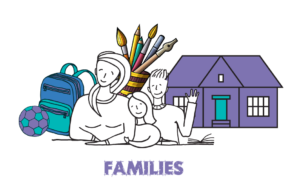Clear and consistent policies and procedures guides school action for early response and case management of incidents if they occur. The following 7-step response plan can be used to respond to online behaviour incidents:
Step One:
Discuss the situation with the students involved, staff, families (as necessary) and administration staff (depending upon level of harm or risk potentially involved). Use the Co-LATE model to understand the situation and any history which may be relevant to the incident. Ensure notes are taken during this process (as for every step):
The acronym Co-LATE guides the user to consider the following five actions during a conversation with students experiencing some difficulties:
Co nfidentiality
L isten
A cknowledge concerns
T alk about the options
E nd with encouragement
(Friendly Schools, Evidence for Practice)
Confidentiality: be clear with students about when you may need to talk to other adults about the content of their conversation (for example, duty of disclosure)
Listen: Active listening shows the students you are interested in what they have to say and enables you to confirm you have understood the details of the conversation accurately. Ask open-ended questions eg: “tell me more about what happened next…”
Acknowledge their concerns: in the form of paraphrasing students’ concerns and their reaction to the situation, for example – “that sounds pretty tough”.
Talk about the options: This step is likely to be most effective when you encourage and help students to identify solutions to their own concerns. Only offer your own suggestions if the students agree they need help. Responses suggested by and endorsed by students will likely be put into action faster. When identifying responses with students, it is important to also discuss the positive and negative consequences of each to enable students to make an informed decision about how to proceed with the situation.
End with encouragement: a summary of what was discussed can help students make a decision about how to proceed with their situation and provides an opportunity for you to give encouragement to the student. At this point it may also be helpful to establish a time to have a follow-up meeting with the student, to discuss the effectiveness of implementing their strategy.
Step Two: Assess the level of risk or harm (consider the frequency, intensity, type and the duration of the behaviour) associated with the incident and triage as high, moderate or low. A guide to dealing with the sharing of explicit material at your school provides support and advice to school leadership teams around the sharing of explicit materials. Legal Aid WA’s 'R U Legal?’ Program includes sessions for young people, a fact sheet for parents, legal advice about sexting and image-based abuse, filming young people fighting, and cyberbullying. It also includes information about the legal consequences if young people break these laws. Use this risk assessment to decide what action needs to occur next eg: who to contact – see Step 3.
Step Three: Determine who needs to be contacted, including:
- governance structures – system level and/or school board
- Principal – administration team; tutor or other teacher(s) of the young people involved
- pastoral care team
- families
- school support services and external support agencies if required
Step Four: Collect, record and file all information related to each case. Ensure each stage has been documented and recorded.
Step Five: Agree on the plan to be implemented. It is important for schools to keep in mind that students’ poor online behaviour usually indicates a need for extra help with online SEL, in the same way that children struggling with academic learning receive extra help (EEF). The eSafety Commissioner has compiled the Online Safety and Wellbeing Directory with links to information and support.
Step Six: Implement the agreed plan of action. Reinforce positive behaviour. Ensure all vested parties (as determined in report Step 3) have a copy of the agreed plan and are working together to reinforce positive behaviours.
Step Seven: Check in with all parties involved in the incident at regular predetermined intervals. Offer additional support to those students who are experiencing difficulties adhering to the bounds of the agreed plan.



